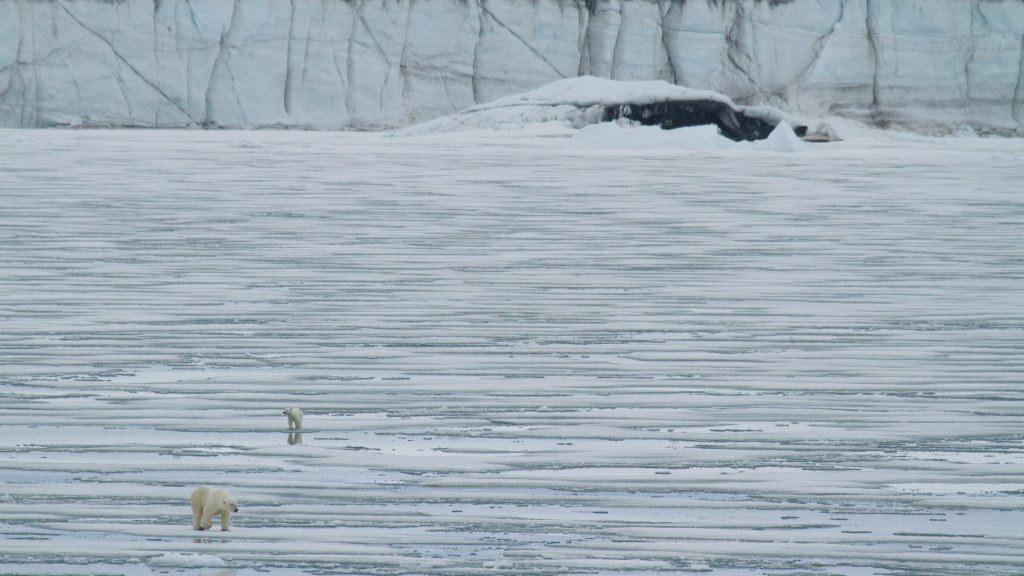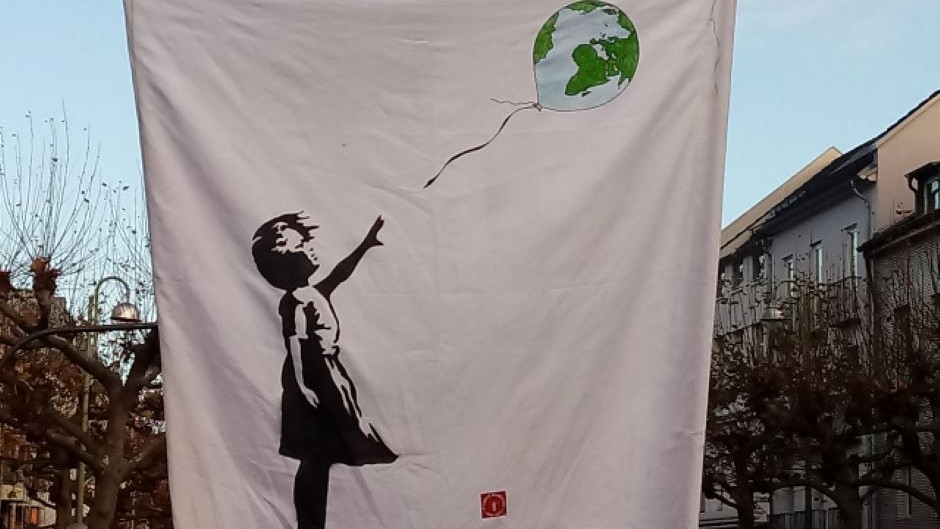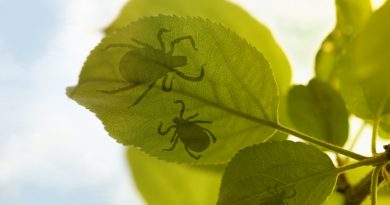ICE BLOG – Not “if” but “when”: Polar bears at risk of disappearing in 80 years

Rapid emissions cuts could still ensure their long-term survival. Otherwise, some Arctic regions seem set to lose polar bears by 2080 – and all but a few populations could collapse by 2100, according to a new study.
In a study just published in Nature Climate Change, the conservation group Polar Bears International (PBI) and a team of scientists from leading universities have worked out when polar bear populations across the Arctic are likely to disappear due to sea ice loss from global warming.
Scientists have known for a long time that the loss of sea ice in the Arctic in our rapidly warming world will lead – indeed is already leading – to the decline of polar bear populations. The furry white giants rely on sea ice because that is where they hunt their main food source, seals, whose blubber gives them the fat they need to survive the Arctic winter. Polar bears are frequently used to symbolize the threat to our planet from human-caused global warming. But until now, there was not enough data to predict how much time is left to save them from extinction.
The adjunct professor in the University of Wyoming Department of Zoology and Physiology initiated the project and is one of the co-authors.
The scientists used data from polar bears fasting on land to determine how many days the animals can go without sea ice before reproduction and survival decline rapidly.

Dr. Peter Molnar is the co-author of the study who built the energetic model.
The team then intersected these estimates with climate model projections of how many ice-free days the bears will face in different places around the Arctic.
To calculate the amount of sea ice, they used two different greenhouse gas emissions scenarios. One assumes business as usual, with no action on climate change and no reduction in fossil fuel use. The other envisages moderate cuts in emissions.
The results do not make happy reading.
“No place in the Arctic has been spared”

Cecilia Bitz, a climate scientist and sea ice specialist at the University of Washington, Seattle, is the other main author of the study. She was also one of the original developers of the Community Earth Systems Model, which is used in the study to project the number of future ice-free days where each of the 19 polar bear populations lives. I called her up to talk in more detail about what she and her colleagues had found out:
Exactly how long polar bears can survive in particular regions of the Arctic depends on what happens to the sea ice there.
“Every place in the Arctic the sea ice is in decline”, Bitz told me. “We have 40 plus years of data now, there’s no place in the Arctic that’s been spared. In fact it’s almost the worst scenario possible, because the sea ice retreats from the outside to the inside, from the edge towards the centre, and polar bears inhabit the edge. That’s where the ocean is the shallowest, the continental shelf regions, right next to the coast. It’s shallow, and that’s where there’s more nutrients available in the surface ocean, whereas where the ocean is deep, they sink away from the surface (…) So the polar bears are hanging out where the nutrients and the ecosystem is productive. And that’s exactly where the sea ice is retreating first.”
Business as usual disastrous for bears
The “business as usual” emissions scenario used for the study would lead to an average temperature increase of 3.3 degrees Celsius above pre-industrial levels by the end of the century, well above the 1.5 to 2 degrees Celsius goal of the Paris Agreement, but in line with the way the world is currently moving. If we were to go that route, all but a few polar bear populations will likely be gone by 2100, Bitz and her colleagues conclude. In Hudson Bay and Alaska, polar bears could face reproductive collapse by as soon as 2080, followed by those in the Davis Strait, west of Greenland.
The sea ice expert says the improved availability of daily data and higher available computer power made it possible for the authors of the new study to come up with these dates, which show we have a very small time window to reduce emissions and prevent the demise of the polar bear.
Let them eat foxes?
Bitz says people often ask her why polar bears can’t just stay on land and eat ducks, geese or foxes:
“Polar bears can feed on land but really ineffectively. They’re so poor on making that transition that it doesn’t suffice, so they end up starving even if they change their food source.” Seals, with their fat blubber, are their perfect food source.
Seals, she told me, also need sea ice, where they make snow caves at the surface and have their young. But they utilize the ice earlier in the season. By the time the pups are a few months old they can swim. So they could live without sea ice for the deep summer.
For polar bears, however, sea ice in summer is key.
“And that’s just exactly wrong with the climate system just now. The sea ice is decreasing most rapidly in summer.”
And the ice-free season is the fasting season for polar bears.

Moderate emissions cuts no guarantee
The second scenario used in the study models what would happen if we make moderate carbon emissions reductions, resulting in an average temperature increase of 2.4 degrees Celsius above pre-industrial levels by the end of the century. That would mean more polar bear populations could survive. But this would still not ensure their long-term survival, the scientists conclude, because in the long term, temperatures would continue to rise beyond 2100, “exceeding the warmest temperatures that have occurred in the polar bear’s evolutionary history”.

“We can’t let our species be terminated like this”
Bitz is keen to stress that the world can still ensure the continued survival of polar bears – and numerous other species under threat from climate change – by making more rapid and drastic cuts to emissions than foreseen in the scenarios she and her colleagues used for the study. I asked her if she was optimistic.
“I am because I can’t face the other alternative. I think people are more like me than not. And we’ll all someday say this is unacceptable, we can’t let our people die, we can’t let our species be terminated like this.”
She mentions surveys indicating that 70 percent of Americans are aware of climate change and concerned about it and would reduce their greenhouse gas emissions “if it wasn’t painful.” Ah, there’s the rub.
“People don’t like the idea of conserving by reducing their own economic wellbeing. What if people didn’t have to make that choice? We don’t want to just say do you want to have economic success or a good environment. We need to make that a win-win – like – let’s do both.”
At this time that may not seem possible, she says, but “I think it’s only a matter of time”.
Lessons to learn from corona?
But time is running out. It would be very hard to change our emissions pathway dramatically, by 2030 or 2040, Bitz acknowledges. “We’re looking at a pathway that’s closer to the ‘business as usual’.”
She hopes, however, that we can learn from the corona crisis:
“Anything’s possible, humans are very resilient and creative. You know I think COVID 19 is kind of an interesting challenge for humans where when really faced with something dire, we’ll make extreme choices like staying home. We could do that with climate change too, right? We could say this is a problem we can’t live with, so let’s do something.”

Why care about the polar bear?
I ask her whether the study she and her colleagues have just published might not paralyze people, leaving them feeling helpless with the time window for action ever shorter.
“We have to be realistic”, she tells me. “We are losing habitat for all kinds of species right now. And I think we should face that. It shouldn’t be an argument for inaction. It should be an argument for immediate action. Let’s save what we can. If we try we can save the polar bear, there’s no doubt about that. It will be threatened, it will be reduced in population. But we could save the polar bear. We can save seals. We can save sea ice. There’s no doubt. But we have to work hard.”

Whether the white, furry giants will be part of our long term future depends on whether the world can put the brakes on the climate warming that is destroying their icy habitat. Again, she says, reducing emissions could be a win-win situation – and not just with regard to the Arctic.
“If we did it we would also have cleaner air, we would have food security for humans in the polar regions – and in the tropics, two places where people are hard hit by food security issues at the moment. (…) I just see no many positives from making a big effort to reduce our emissions. I don’t personally view it as too late. It’s time. The call to action is there.”
Ultimately, Bitz says, polar bears are an indicator of the state our whole planet:
“They represent for me a wildness that is really rare and special. I like the idea that our earth can still have that kind of species that is so extraordinary that it survives a whole winter walking the sea ice. It’s amazing. I want that in my future”.
Related stories from around the North:
Antarctica: South Pole warmed 3 times the global rate over the past 30 years, new study suggests, Thomson Reuters
Arctic: Ice-free Arctic summers likely by 2050, even with climate action: study, Radio Canada International
WMO: Latest projections show “enormous challenge” ahead in meeting climate targets says WMO, Eye on the Arctic
Canada: How sub-Arctic seas are influencing the Arctic Ocean and what it’s telling us about climate change, Eye on the Arctic
Finland: Finland behind on sustainable development goals, Yle News
Greenland: Greenland climate research station under threat from permafrost thaw, Irene Quaile, Ice Blog
Iceland: Ice-free Arctic summers likely by 2050, even with climate action: study, Radio Canada International
Norway: Norway to expand network of electric car chargers across Arctic, The Independent Barents Observer
Russia: Record 38C temperature recorded in Arctic Siberia, Eye on the Arctic
Sweden: January temperatures about 10°C above normal in parts of northern Sweden, says weather service, Radio Sweden
United States: Alaska polar bear den disturbances part of ‘death by a thousand cuts,’ researcher says, Alaska Public Media



